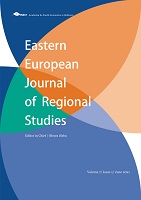UNFREEZING 'THE TRANSNISTRIA CONFLICT' FROM THE LENS OF REGIONAL SECURITY COMPLEX THEORY
UNFREEZING 'THE TRANSNISTRIA CONFLICT' FROM THE LENS OF REGIONAL SECURITY COMPLEX THEORY
Author(s): Amer AbabakrSubject(s): Regional Geography, Security and defense, Peace and Conflict Studies
Published by: Center for Studies in European Integration, Academy of Economic Studies of Moldova
Keywords: The European Union; Transnistria; the Conflict Resolution; the Eastern Partnership Policy; the Security Complexes; the Frozen Conflict;
Summary/Abstract: Transnistrian is a frozen geopolitical conflict extends back to the dissolution of the Soviet Union and the formation of an independent Moldovan state. However, there has been little real movement toward a long-term conflict resolution until recently. The purpose of this research is to determine why, despite the efforts of the European Union, the Transnistrian conflict remains inactive and there is no clear prospect for resolving it. To answer this question, the integrated theory of regional security by Buzan and Weaver has been used. The results of this study show that Transnistria is part of a regional security complex under Russian influence, and its intersection with the security complex designed in the Eastern Partnership plan does not allow the EU to resolve the conflict. The difference in the power structures in the two complexes has an effect on the failure of this process. The matrix of regional security complexes in this area is centralized with sub-branches of superior power and superior institutions, and this has added to the complexity of conflict resolution.
Journal: Eastern European Journal for Regional Studies (EEJRS)
- Issue Year: 8/2022
- Issue No: 1
- Page Range: 5-20
- Page Count: 16
- Language: English

